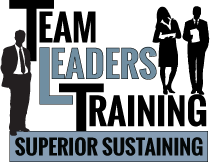With relentless change defining our times, the need for exceptional leadership has never been greater. Unlike the bosses we worked for and some of us have become, demands of the Information Age necessitate a new breed of leader. Becoming relics of the past, authoritarian approaches have destroyed morale, diminished motivation and undermined productivity. Today’s workplace calls for resilient, charismatic leadership; the kind that creates passion, stimulates enthusiasm and keeps people motivated with faithful dedication. Demanding a new way of being knowledgeable, the global economy requires more than just I.Q. or technical expertise. Assessing leadership competence has changed. How they handle their latent reactive feelings have taken precedence. Without being aware of turmoil within them, leaders will be poor at self regulation and less able to effectively work with the affective moods in those they want to influence. Team members observe their leaders’ disposition, it affects their frame of mind and reverberates throughout the entire corporate milieu. Outstanding leadership works through being mindful with emotion, attitude and behavior. Comprehending the powerful role affect plays in the workplace sets the best leaders apart from the rest. It provides better business results, retention of talent, high morale, motivation, collaboration and the trust necessary for dedicated commitment to the company’s mission.
Mindful Interoceptive Transformational E.I. Leadership is observed when a person demonstrates the abilities that constitute the four essential fundamental components of: 1)Self-Awareness, 2)Self- Management, 3)Relationship-Awareness and 4)Relationship Management. This coaching curriculum is a framework for comprehending each element and how they successively build on one another. The private victory of understanding and managing oneself must precede the public victory of understanding and managing others. The program is composed of the following intrapersonal and interpersonal major categories, each with their corresponding mechanisms:
- Personal Competence- Capabilities that determine how we handle ourselves.
- Self-Awareness– Ability to introspectively understand, work with internal states and honest with ourselves about ourselves. Personal competence involves being continuous learners and not letting periodic inevitable setbacks compromise drive and motivation. (See Program: 102 of the Course Catalogue)
- Emotional Awareness- Belief in ourselves enough to elicit constructive feedback and guidance.
- Accurate self-assessment- Cognizant of internal strengths and limitations.
- Self Management– Capacity to regulate internal states to be resiliently balanced under high stress. (See Program: 102 of the Course Catalogue)
- Emotional Control- Facile in effectively coping with inner disruptive impulses.
- Ability to interrupt automatic habitual reactions and pause, in order to respond wisely.
- Resilient in learning from obstacles with sustained perseverance.
- Emotional Control- Facile in effectively coping with inner disruptive impulses.
- Self-Awareness– Ability to introspectively understand, work with internal states and honest with ourselves about ourselves. Personal competence involves being continuous learners and not letting periodic inevitable setbacks compromise drive and motivation. (See Program: 102 of the Course Catalogue)
- Social Competence- Capabilities that determine how we handle relationships from the inside out. (See Program: 103 of the Course Catalogue)
- Relationship Awareness- Requires integrating 1. Presence, 2. Attunement, 3. Resonance and 4. Trust to build the foundation necessary for strengthening motivation, commitment and the dedication to achieve team objectives.
- Presence –
Leaders bring the skills of self-awareness and self-management to cultivate a calm, respectful and receptive sense of being. This fosters sympathetic engagement. Deeply listening to the needs and concerns of those they mentor is vital. Demonstration of respect for mentees’ contribution to the relationship is essential. Leaders need to understand others before being understood by them. Team members must feel cared about before they care what leaders say. - Attunement-
Applying presence interactively by taking in another’s internal state, is a prerequisite for interpersonal empathic connection. This involves benevolent awareness of others’ emotions, needs and perspectives. When team members sense leaders’ attunement with them, there is an experience of “feeling felt”. Leaders speak only after deeply listening and offer thoughtful feedback that indicates having accurately heard what was expressed. - Resonance-
Practicing presence along with empathic attunement creates a collaboration in which a “we” is established as the team members and leaders become in sync. A powerful engaged mutually felt sense of purpose and meaning drives the energy of the relationship forward, increasing morale, building optimism about the future and belief in each other’s abilities. - Trust-
Employing presence, empathic attunement and synergistic resonance develops the essential safety and comfort necessary to create leadership trust.
- Presence –
- Relationship Management -Requires integrating 1. Collaboration, 2. Building bonds and 3. Conflict resolution to understand different perspectives, find a common ideal, catalyze change and move team members with a compelling vision and shared mission. (See Program: 103 of the Course Catalogue)
- Collaboration-
Cooperating toward shared goals. There is no “I” in team. Working together precedes winning together. - Building Bonds–
Taking a genuine interest in others and helping develop them. Ask not what your teammates can do for you; ask what you can do for your teammates. - Conflict Resolution-
Negotiating a win-win outcome.
- Collaboration-
- Relationship Awareness- Requires integrating 1. Presence, 2. Attunement, 3. Resonance and 4. Trust to build the foundation necessary for strengthening motivation, commitment and the dedication to achieve team objectives.
Contact me to enable your team to accomplish its’ dream!



